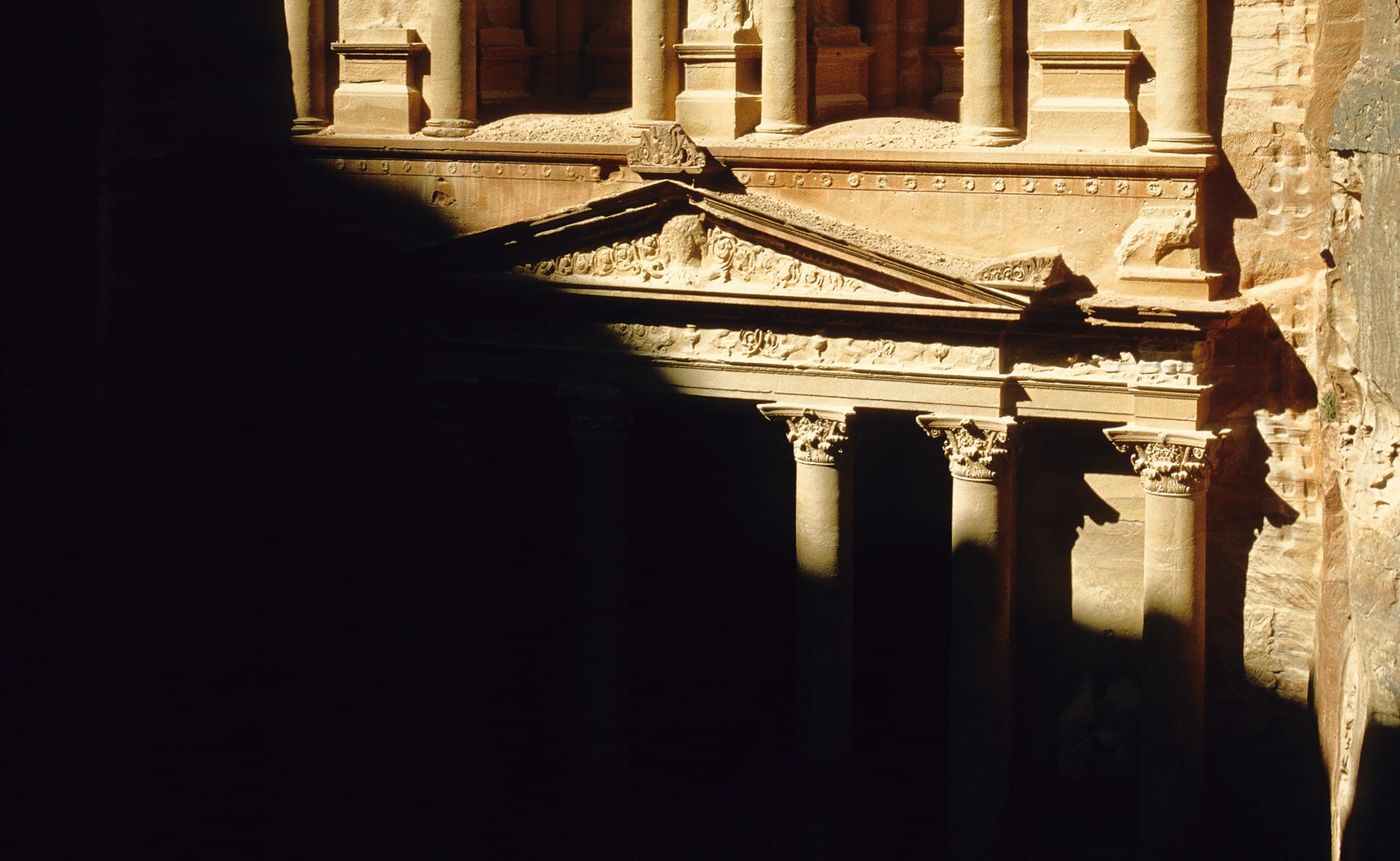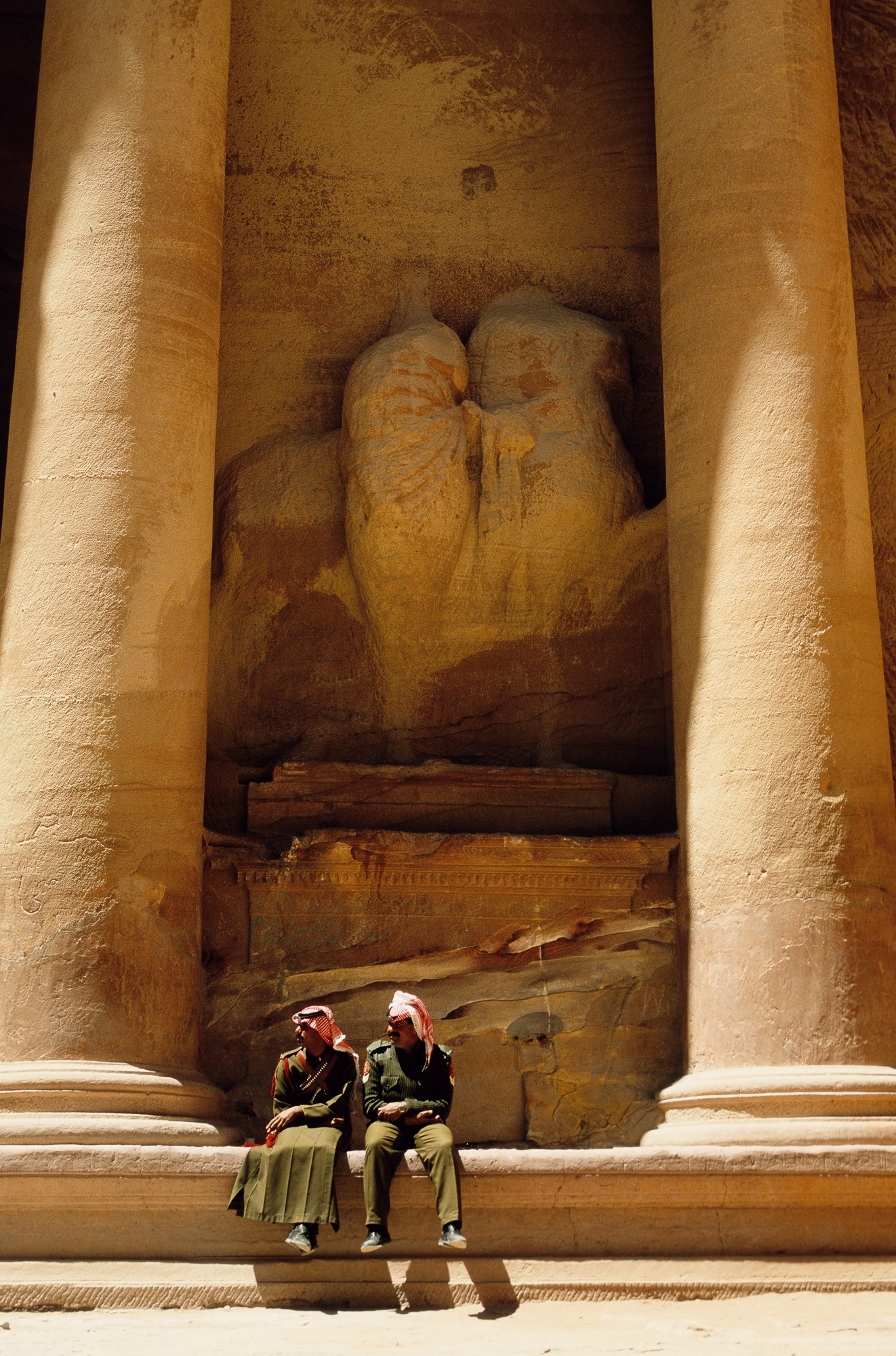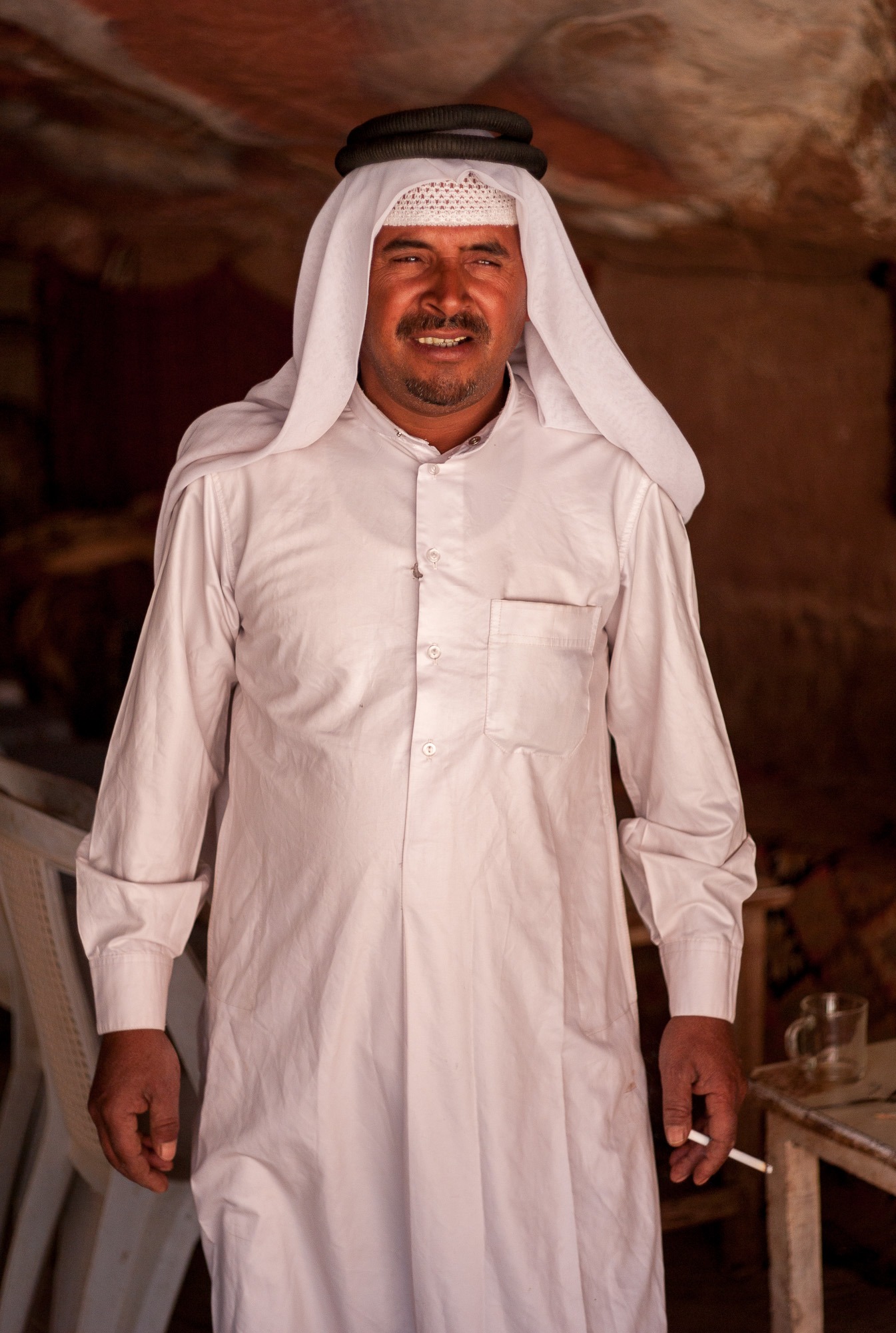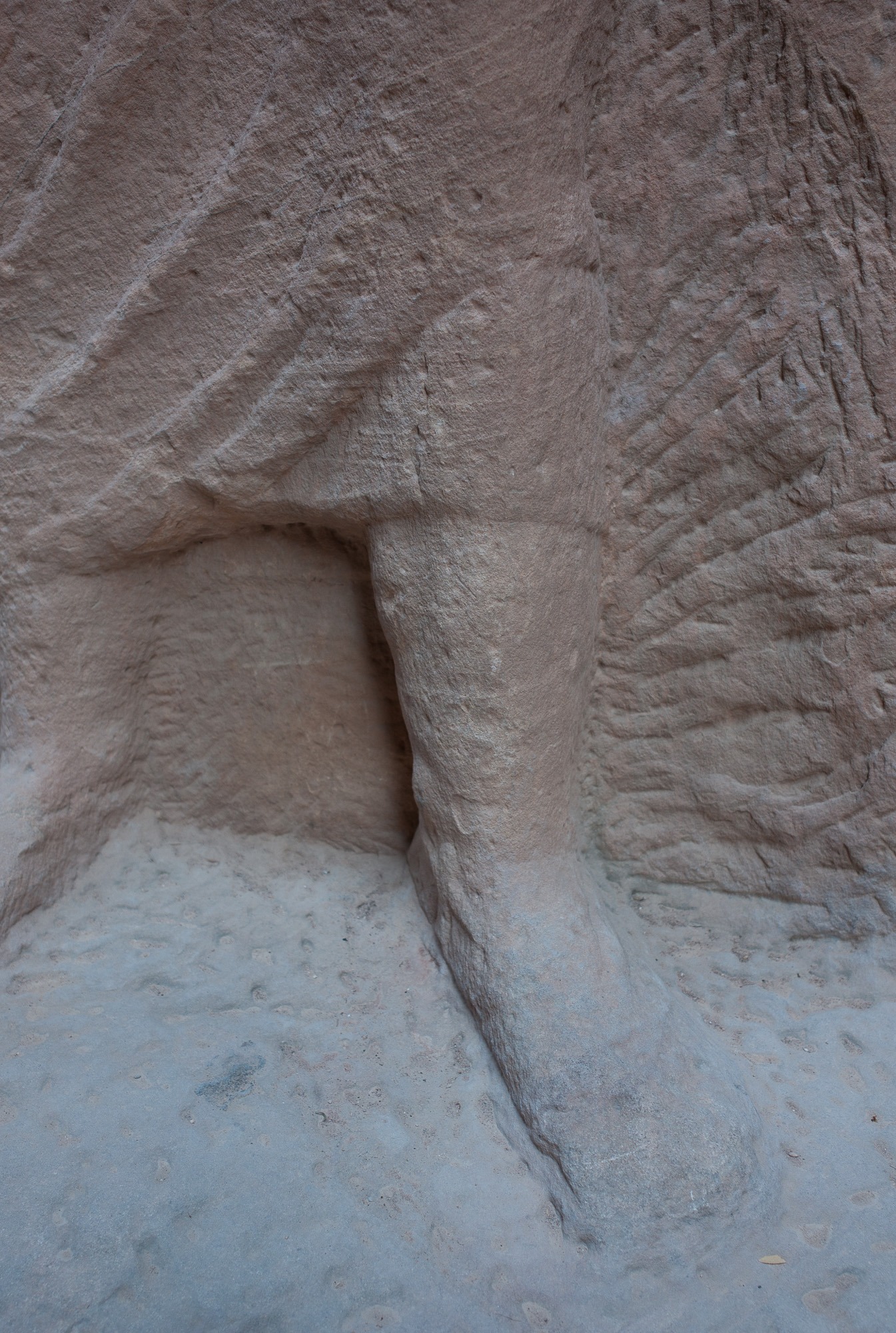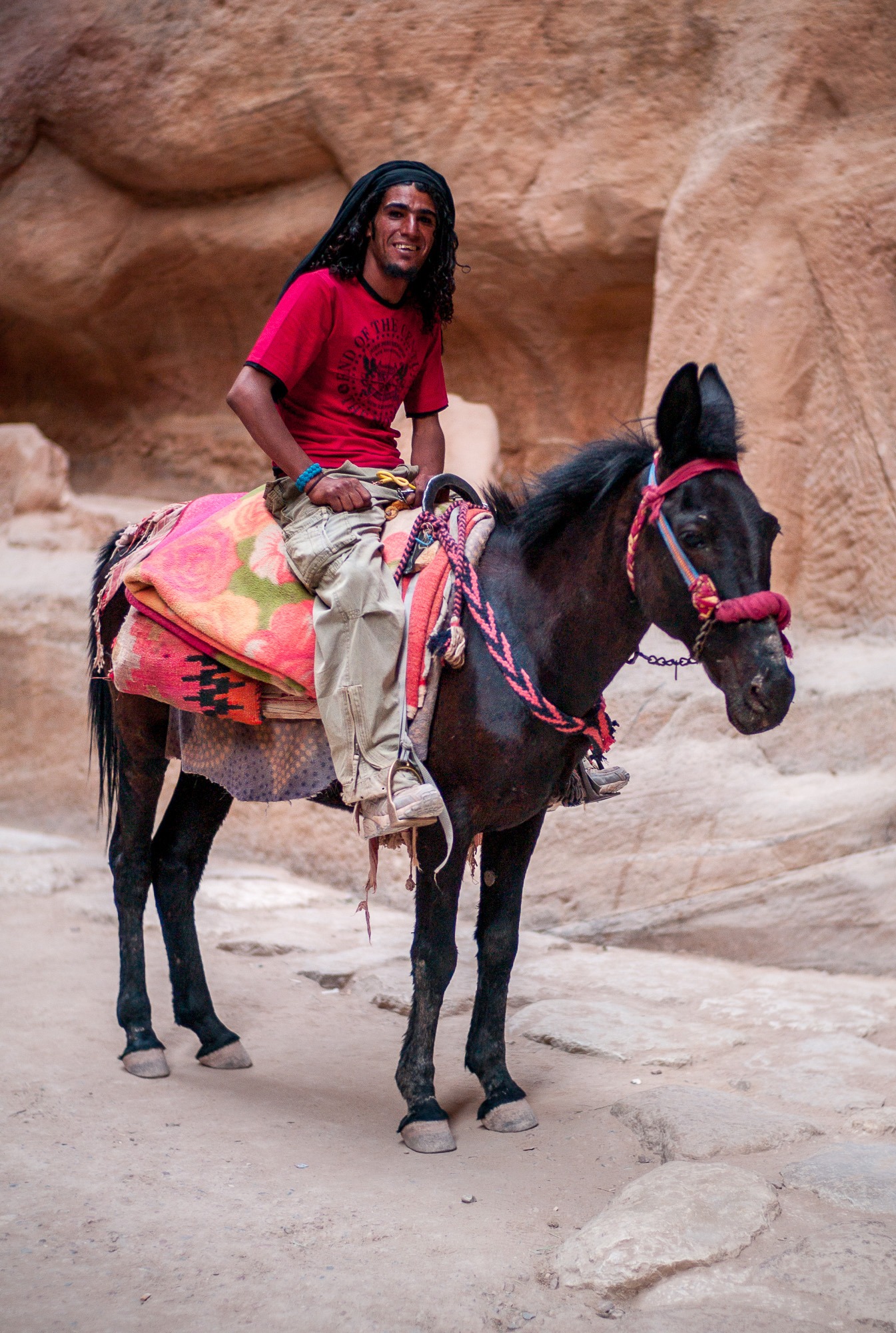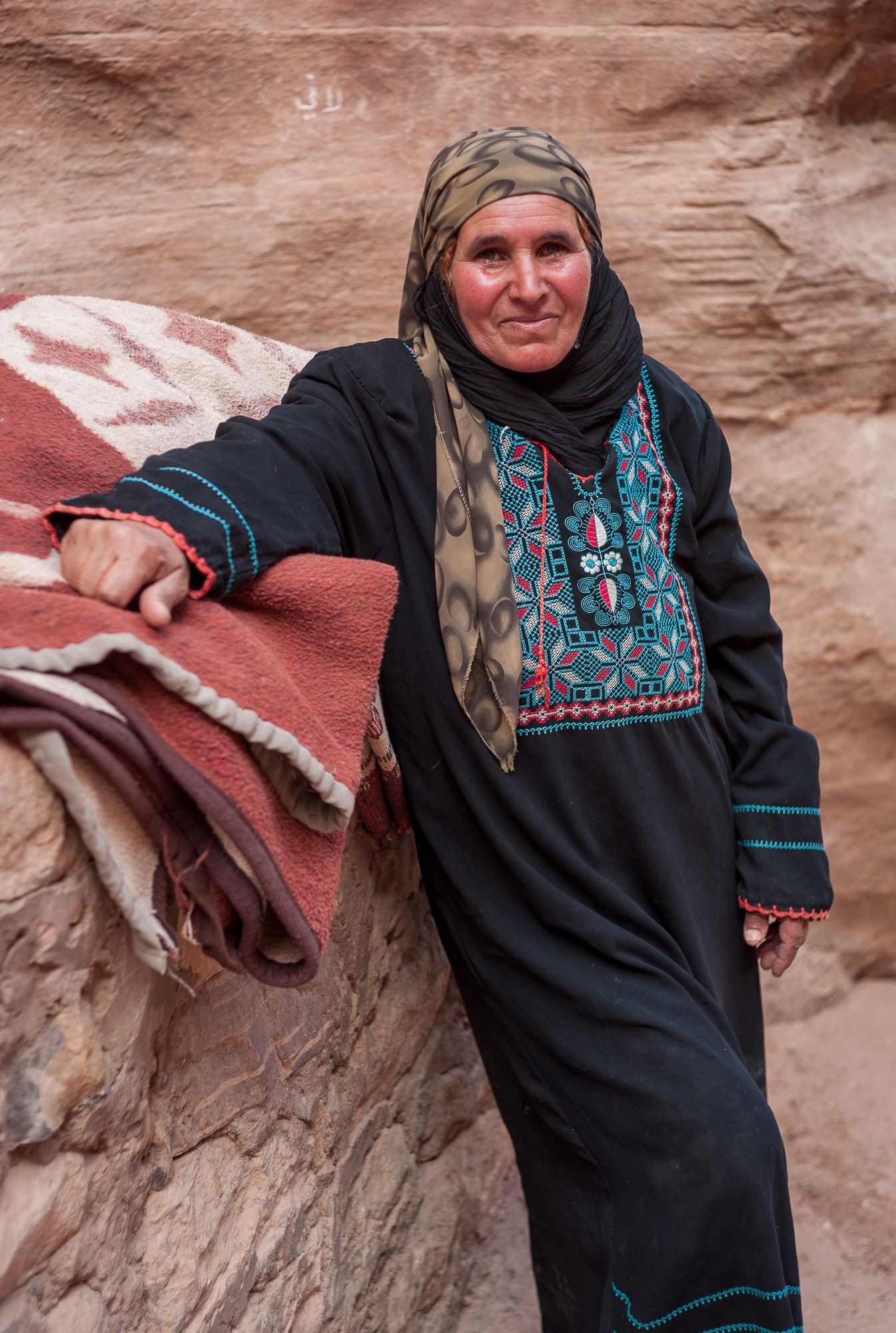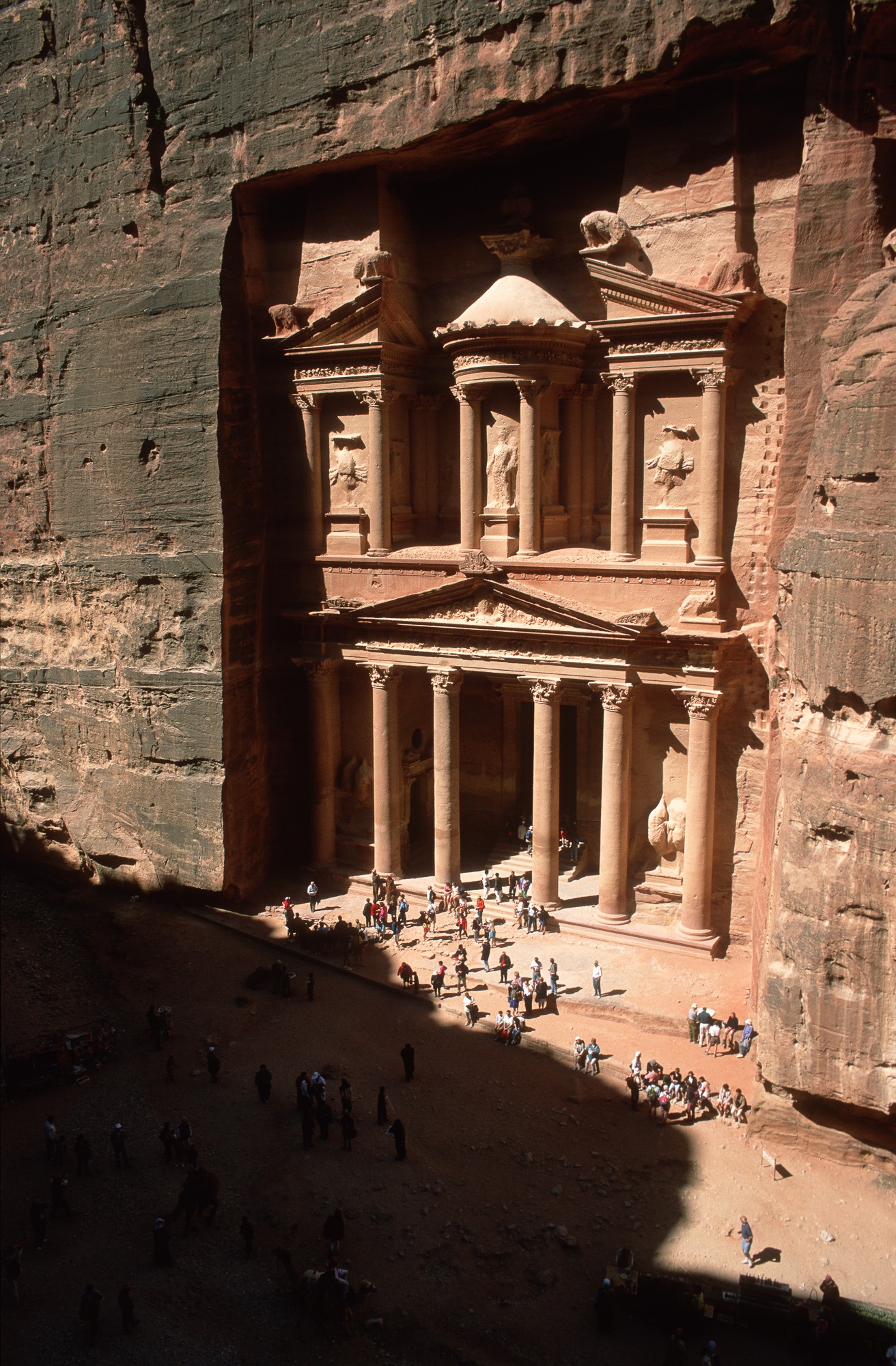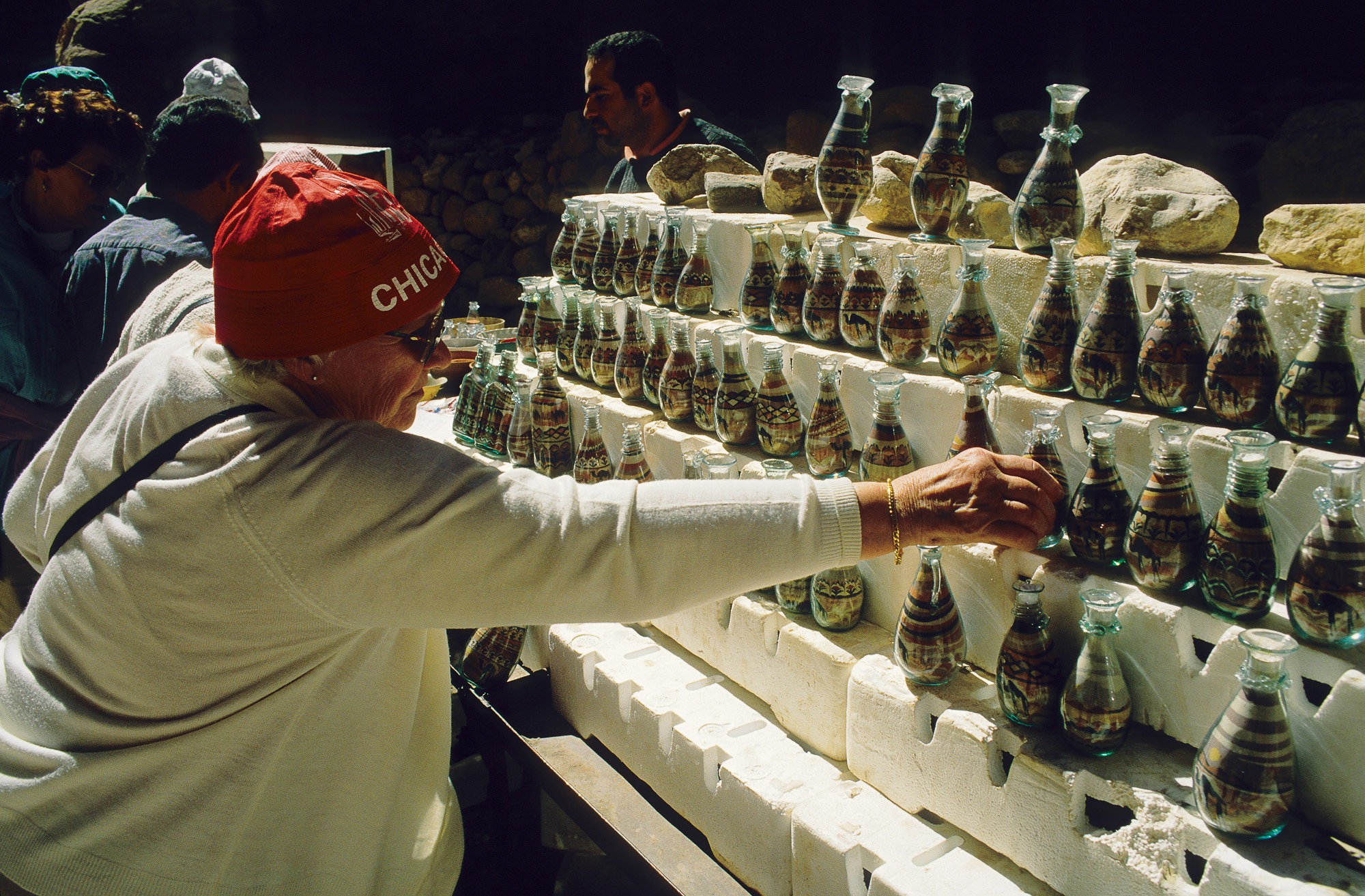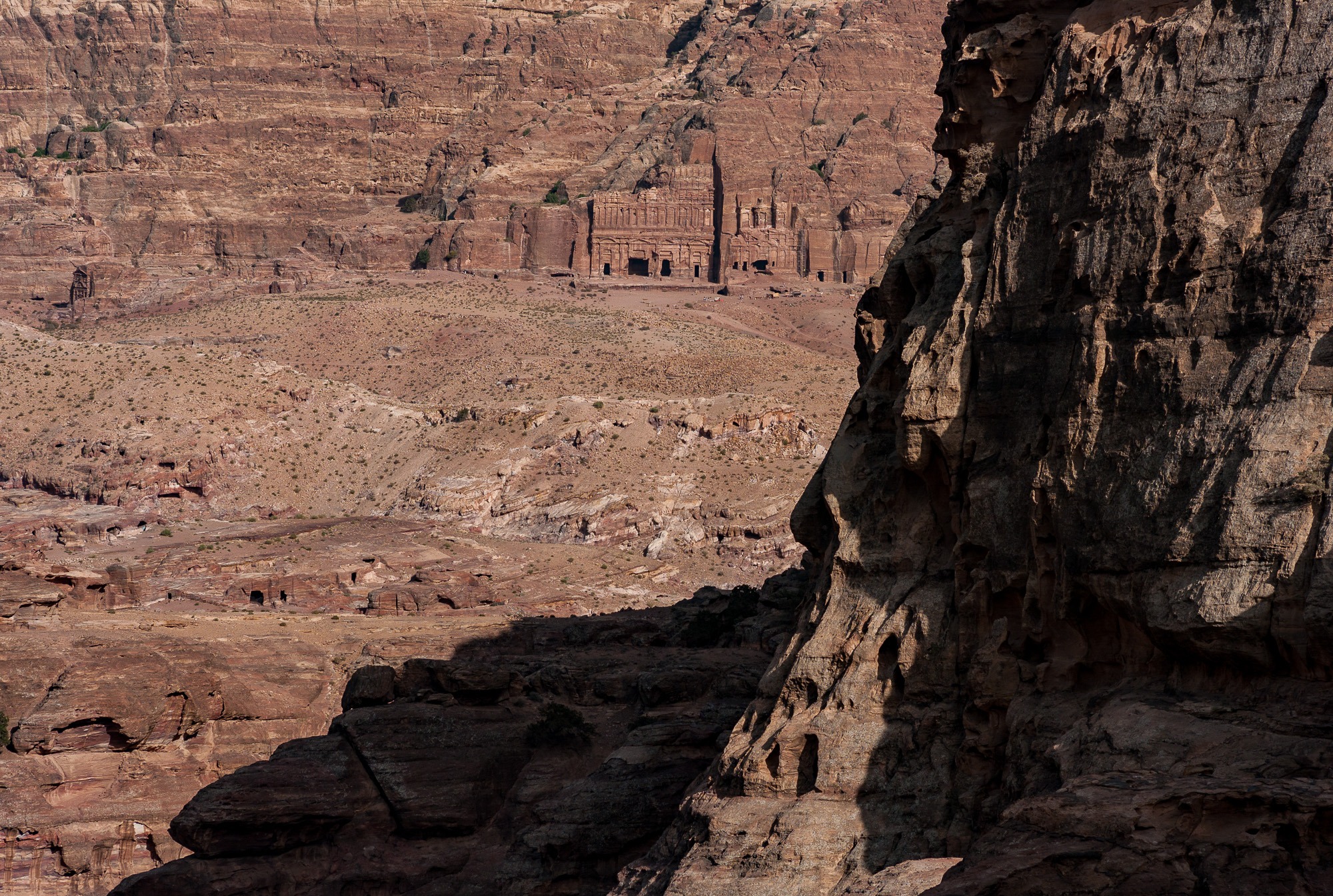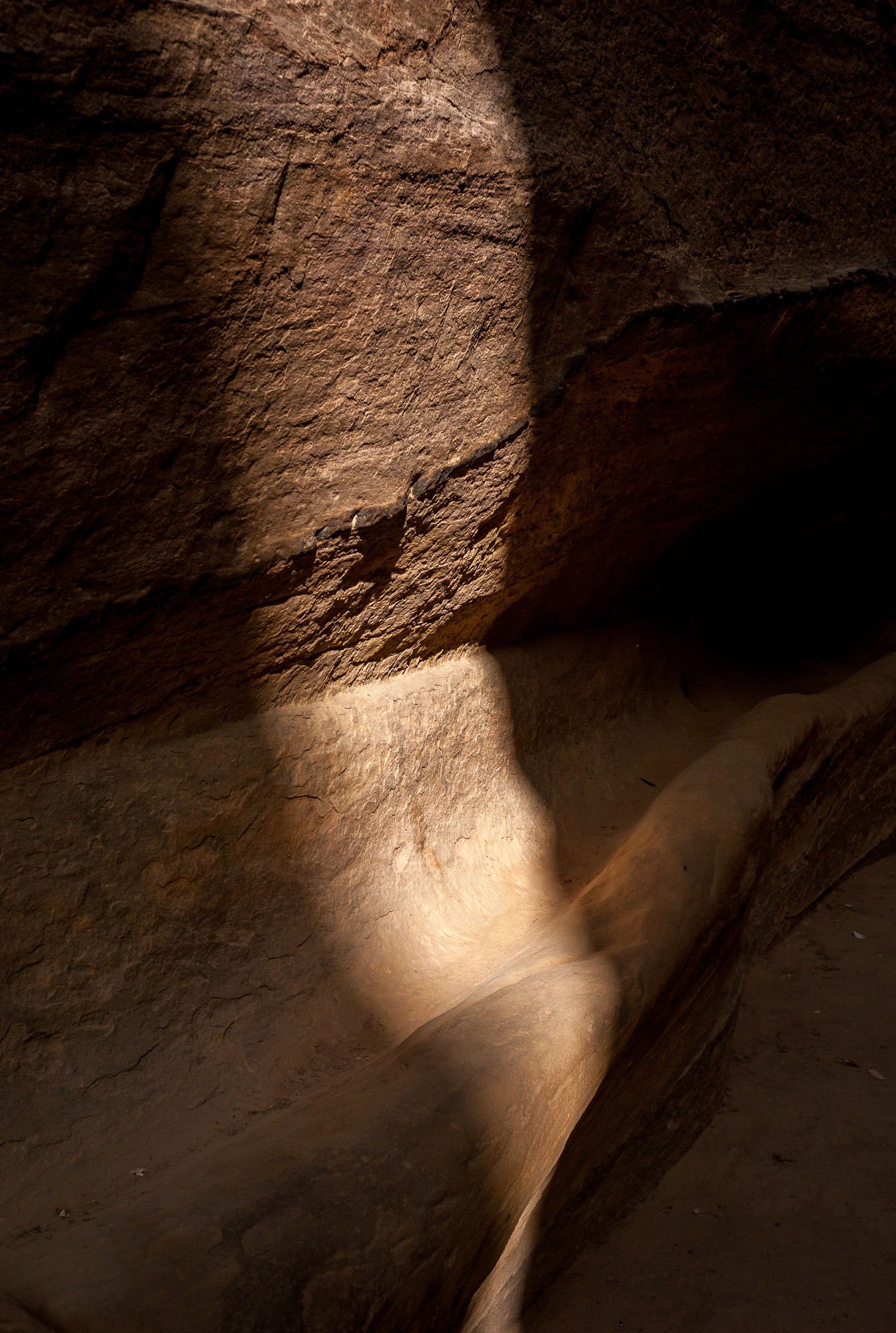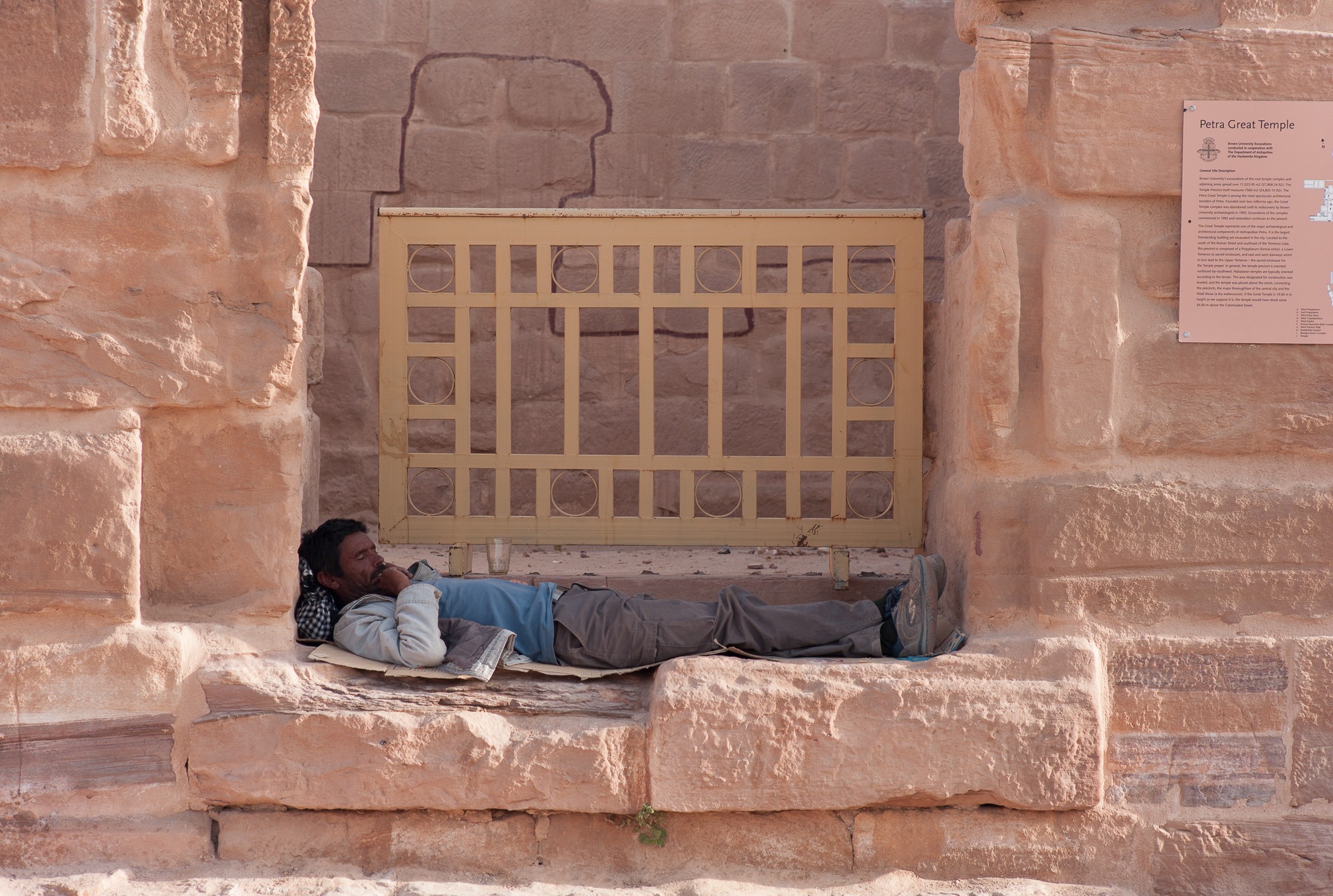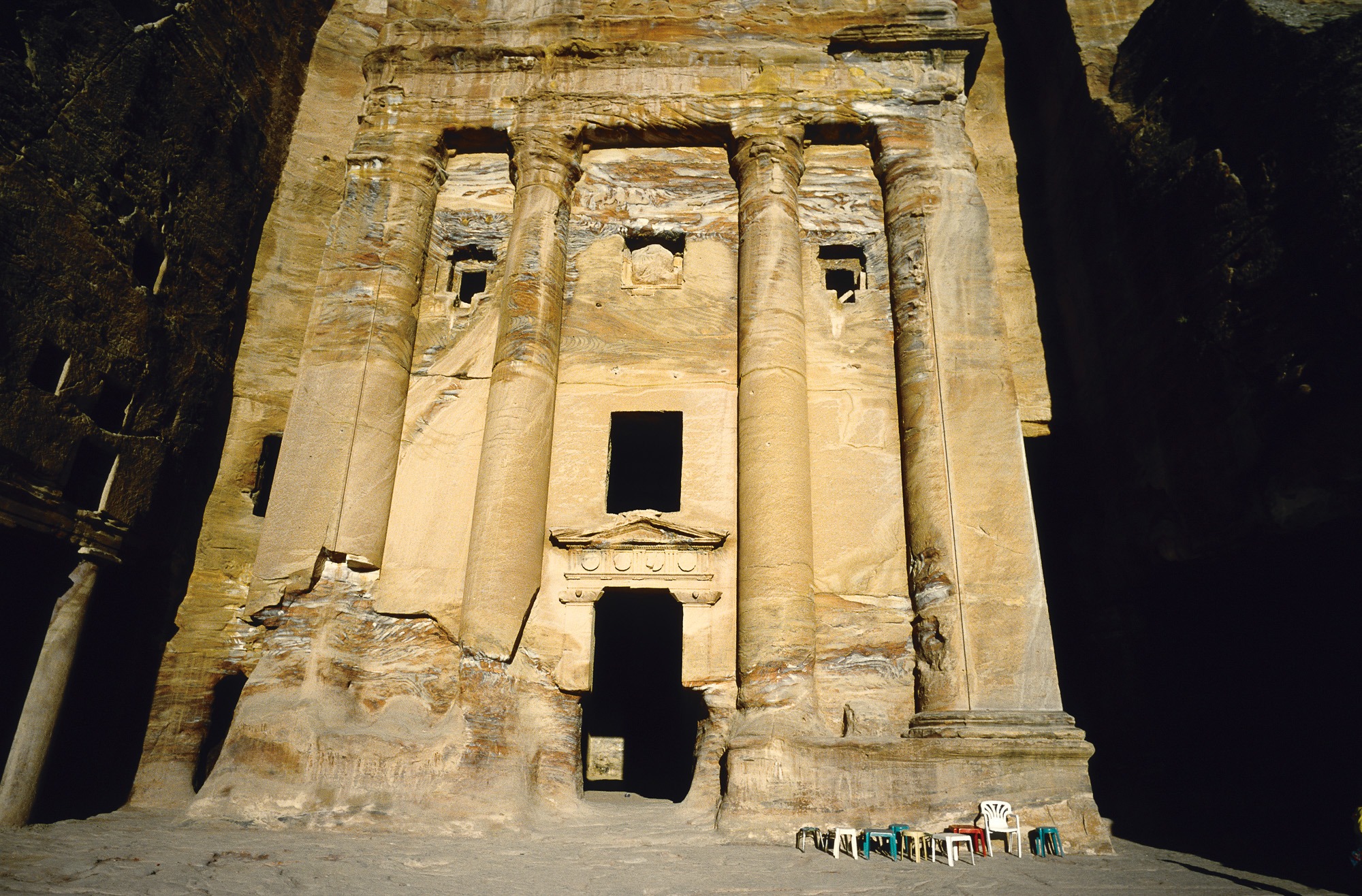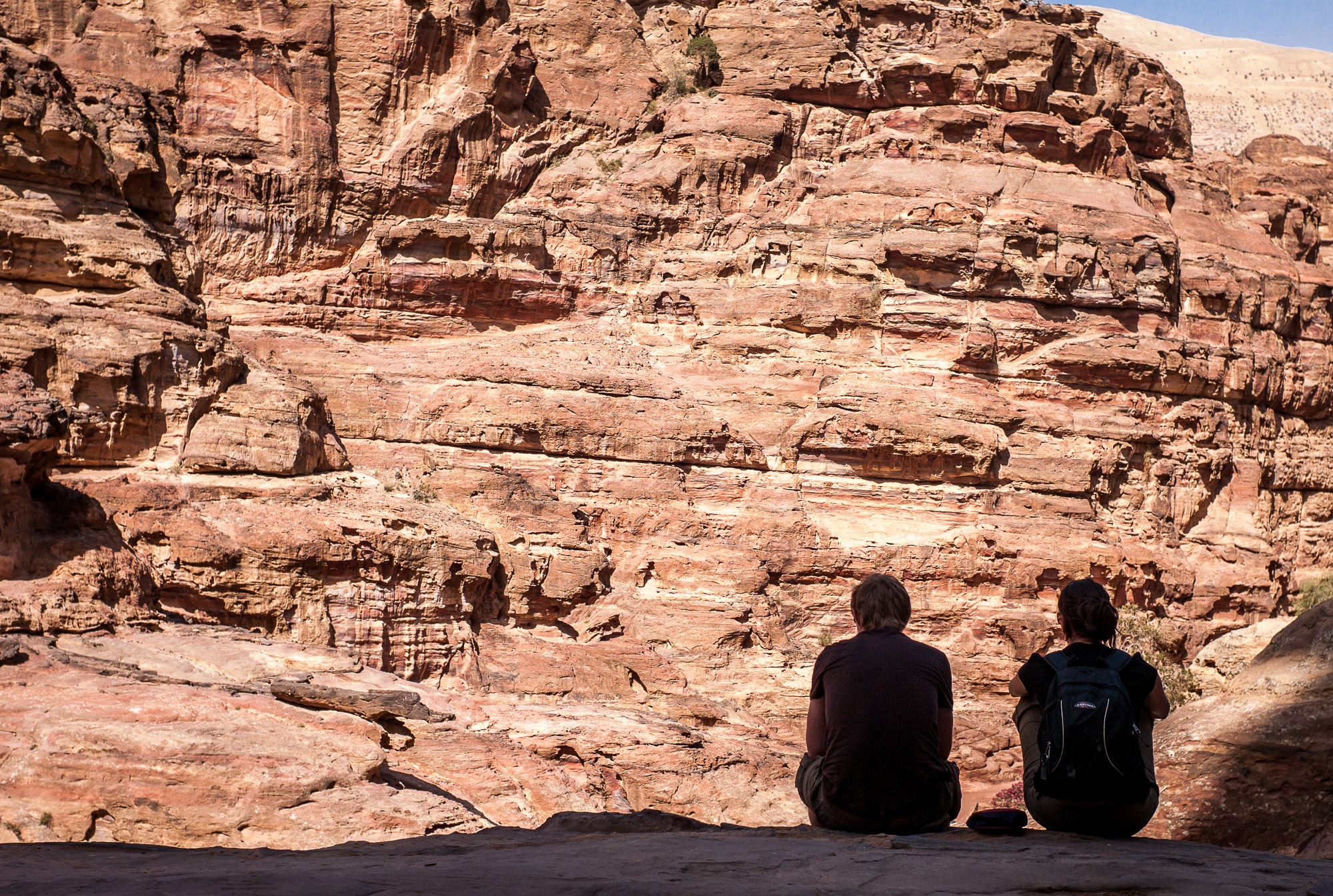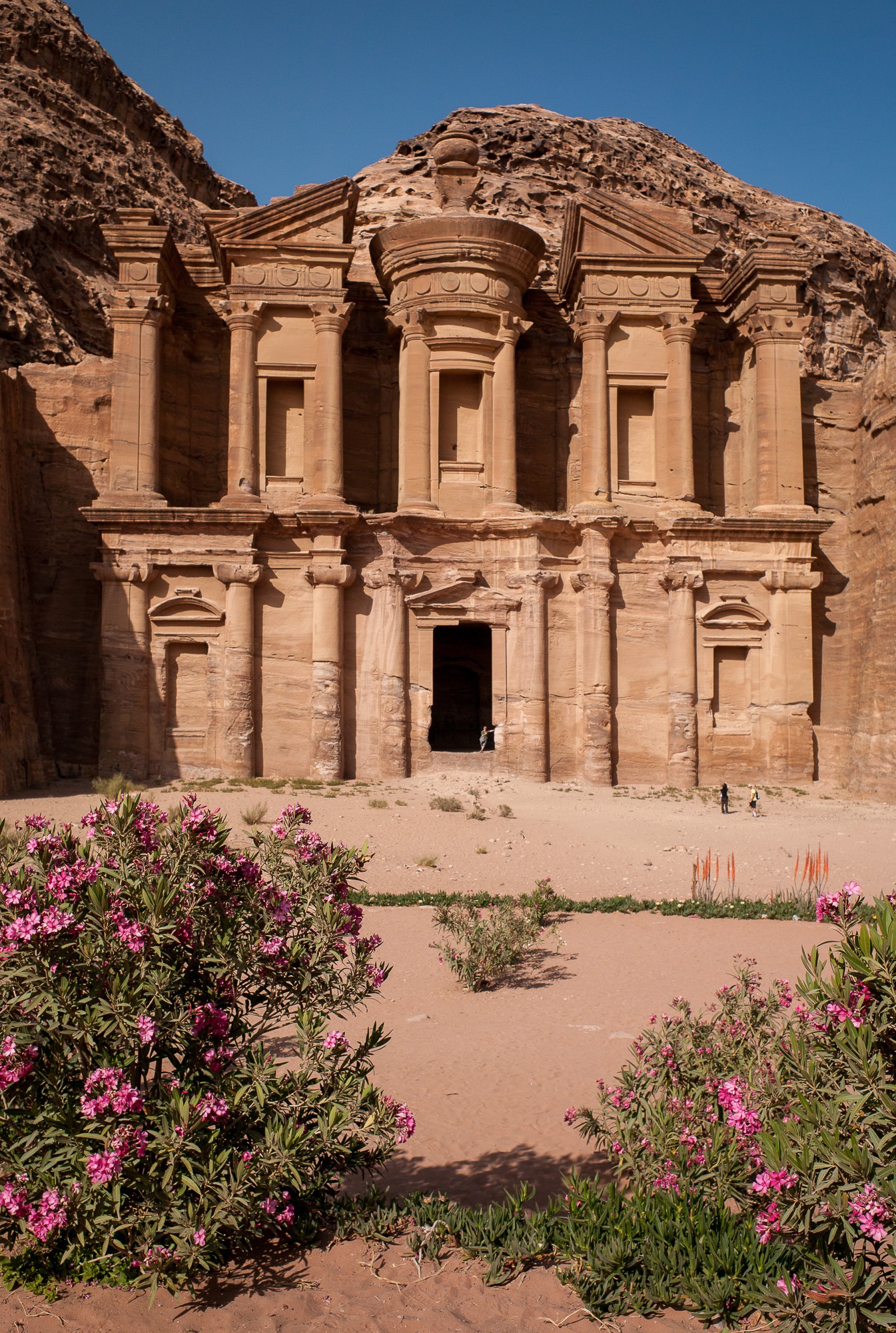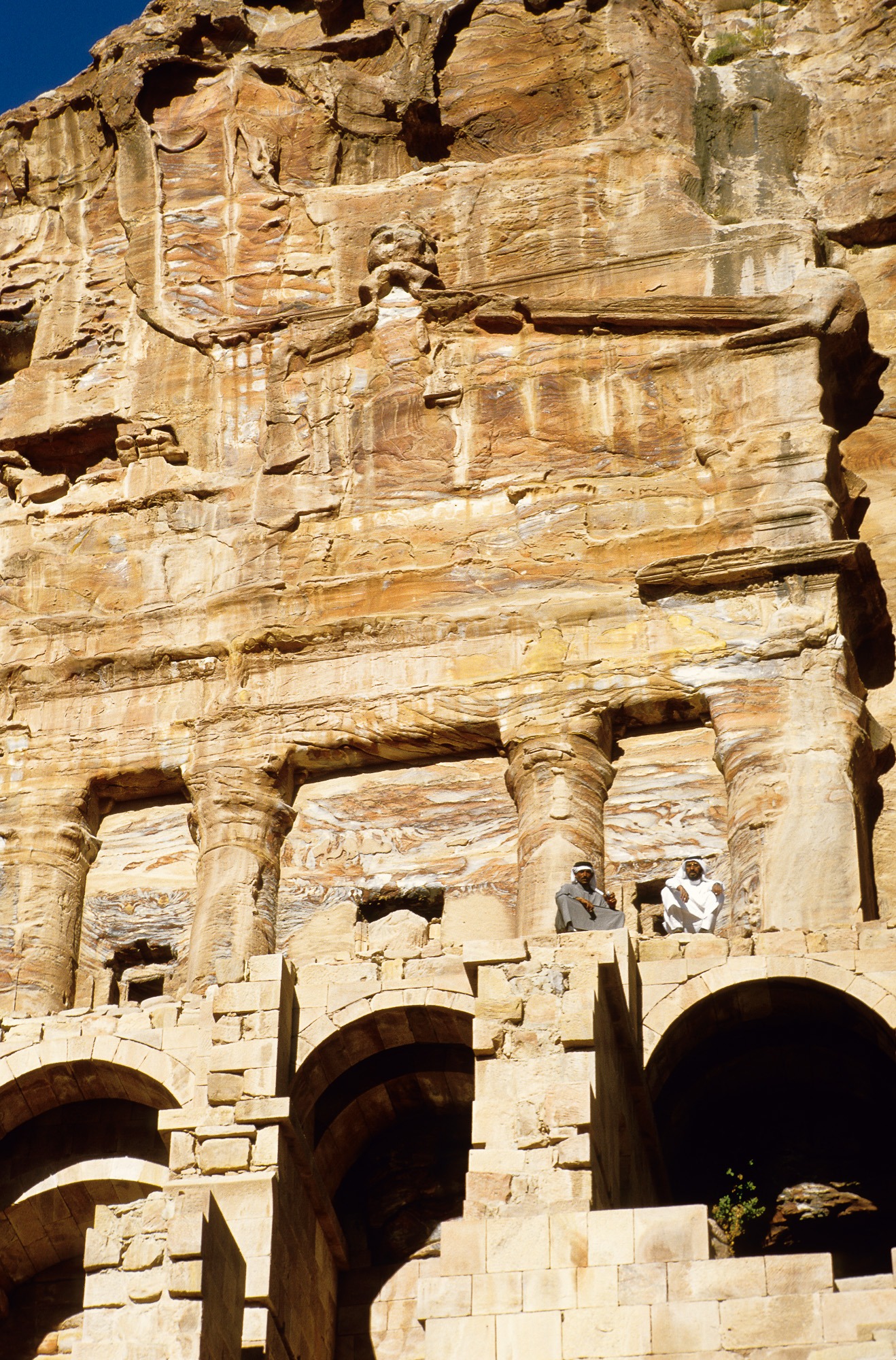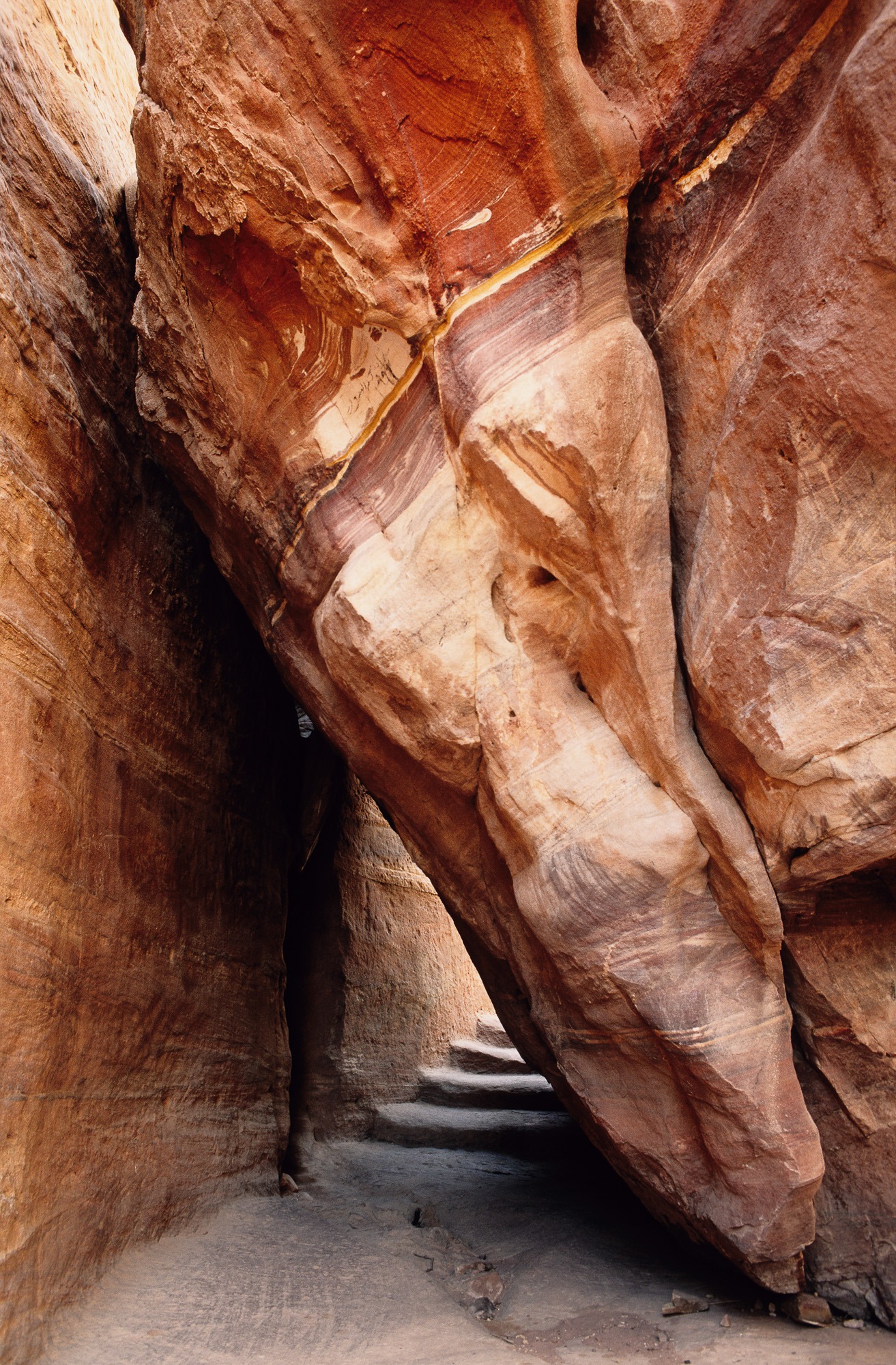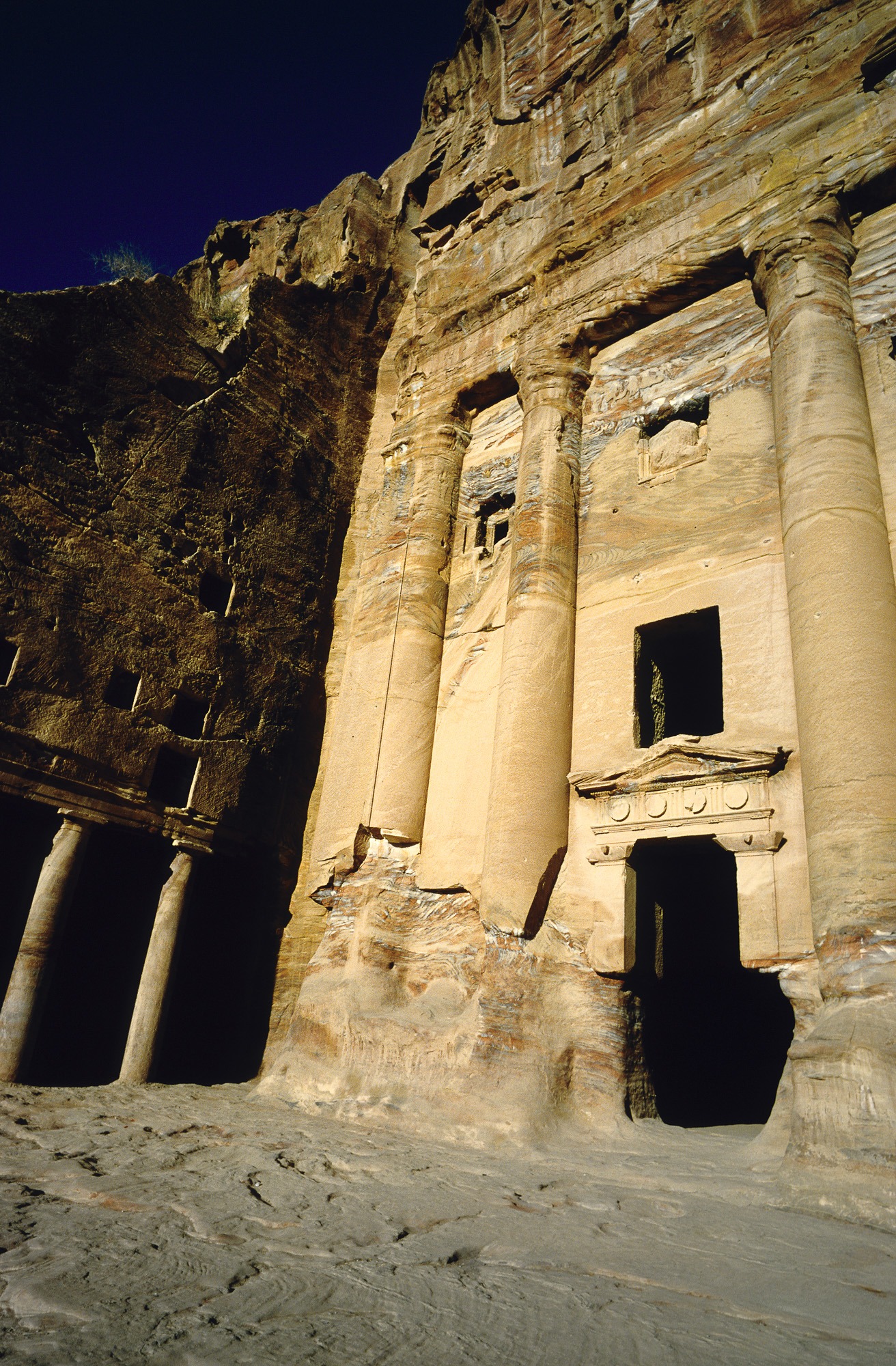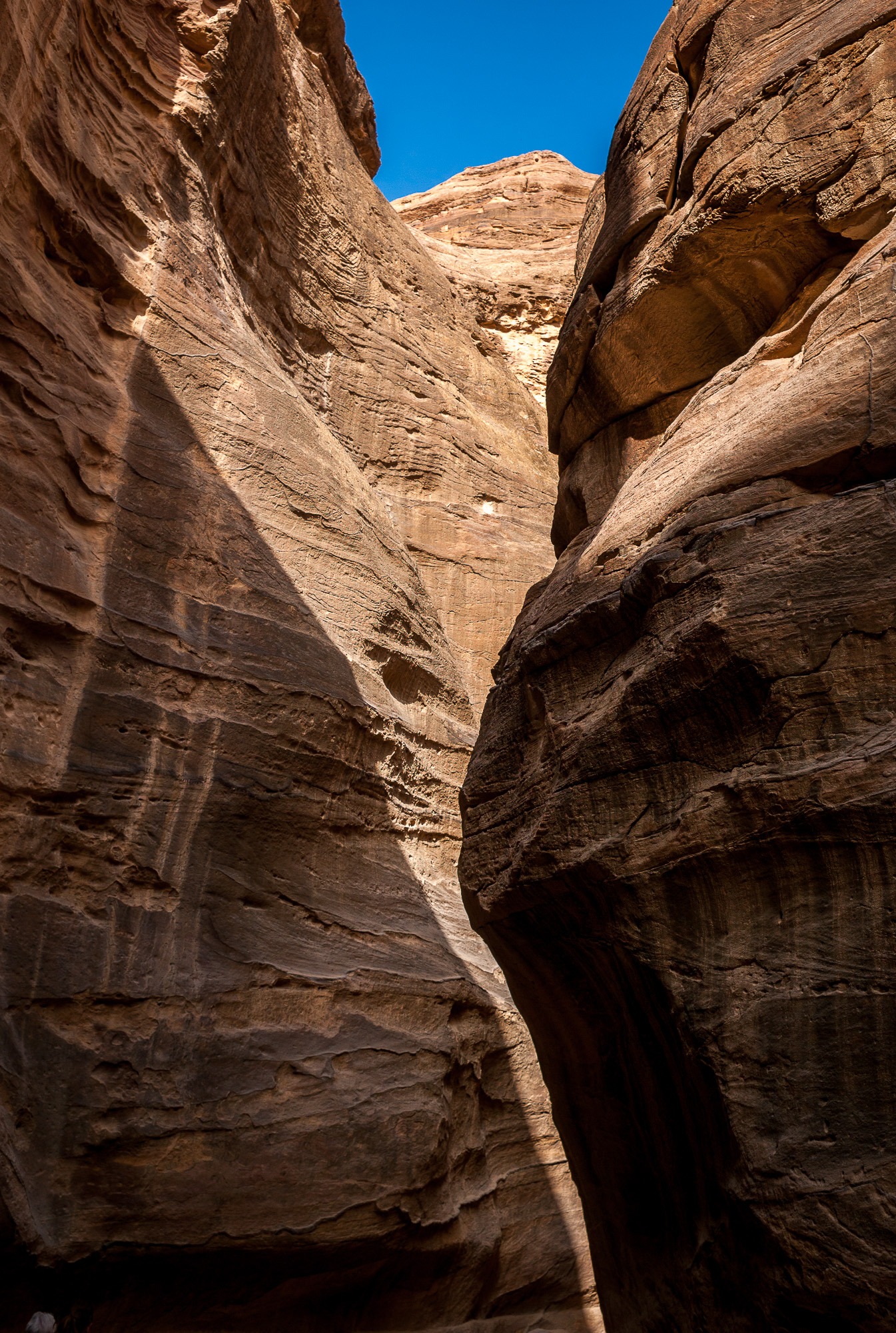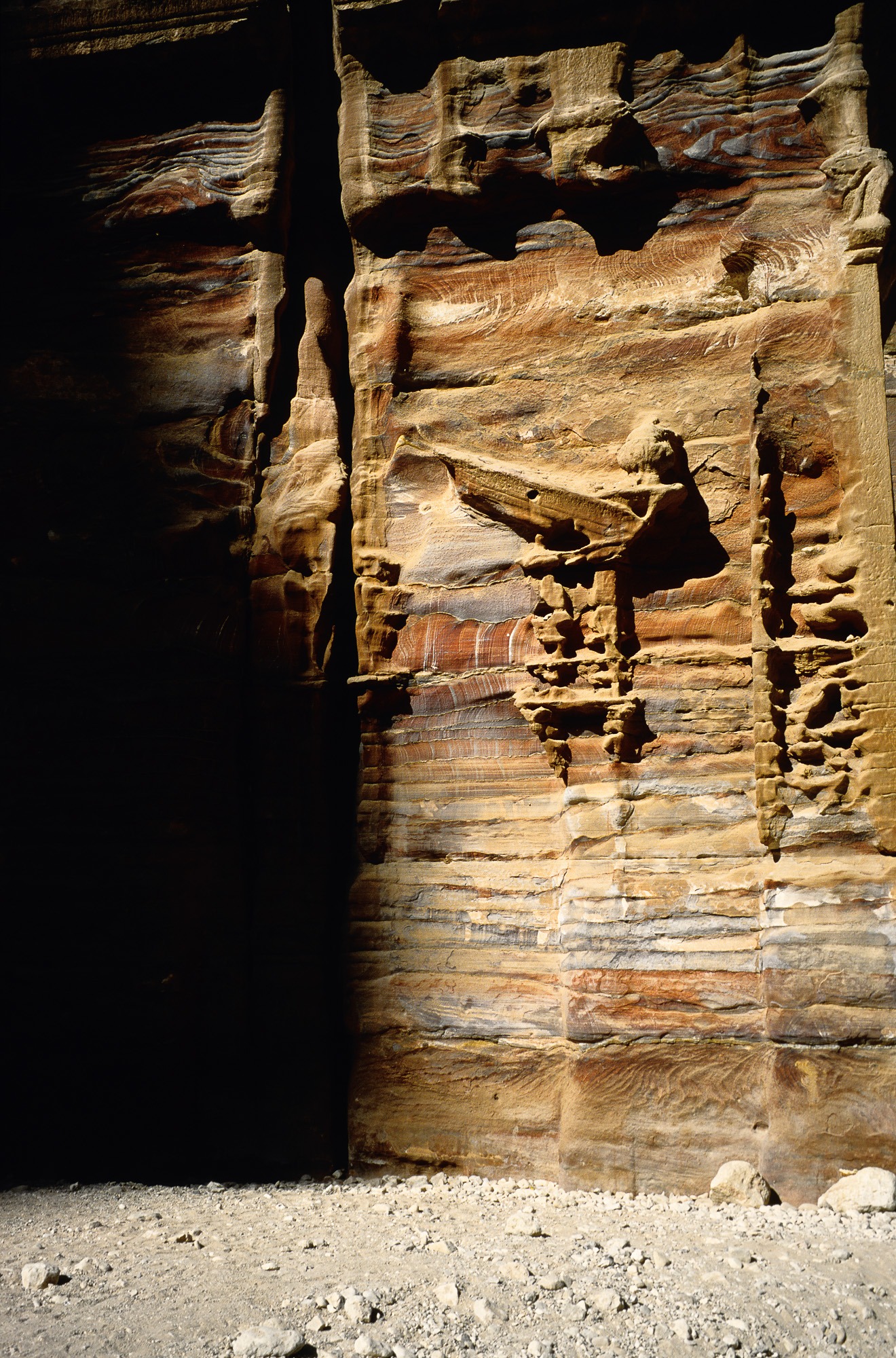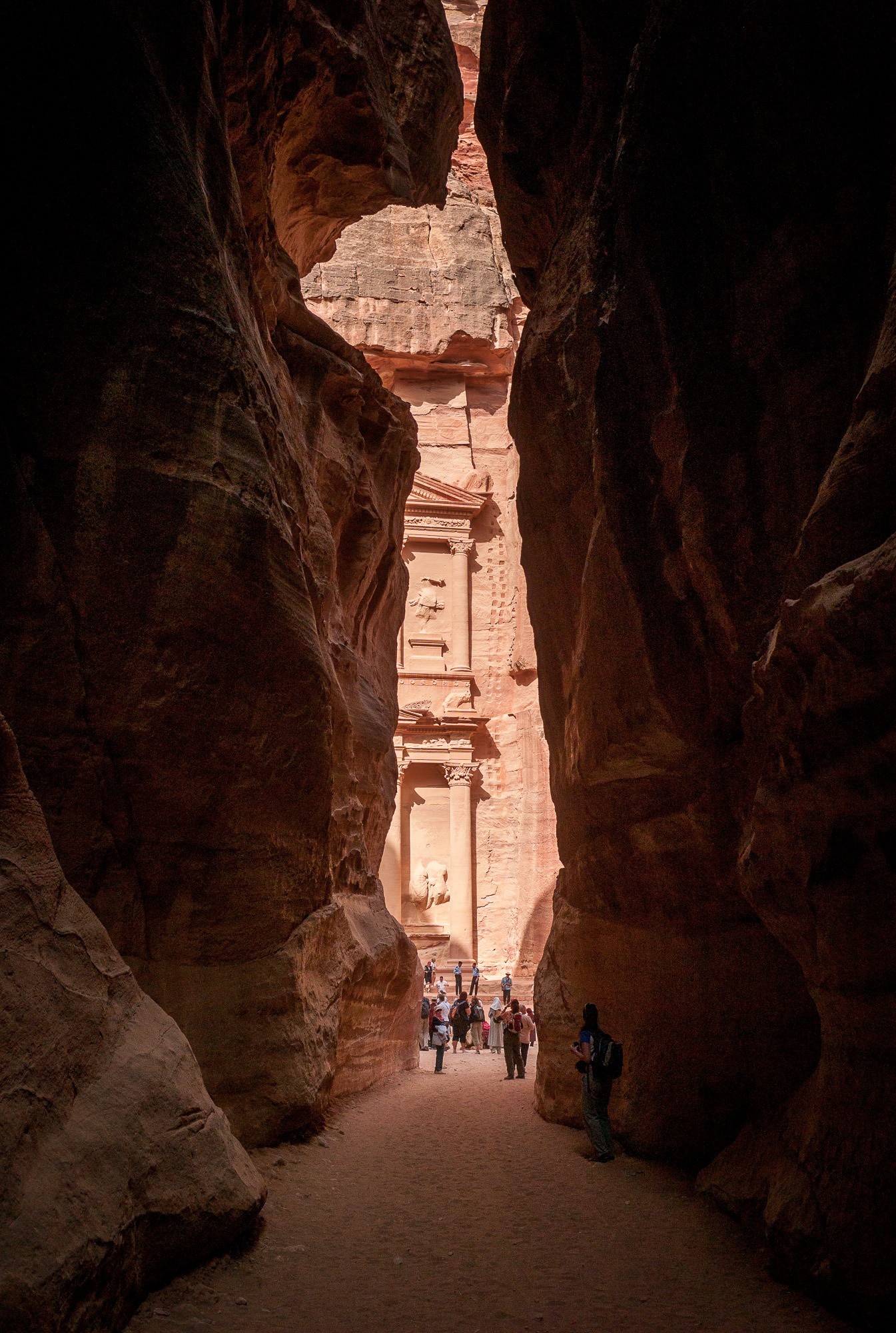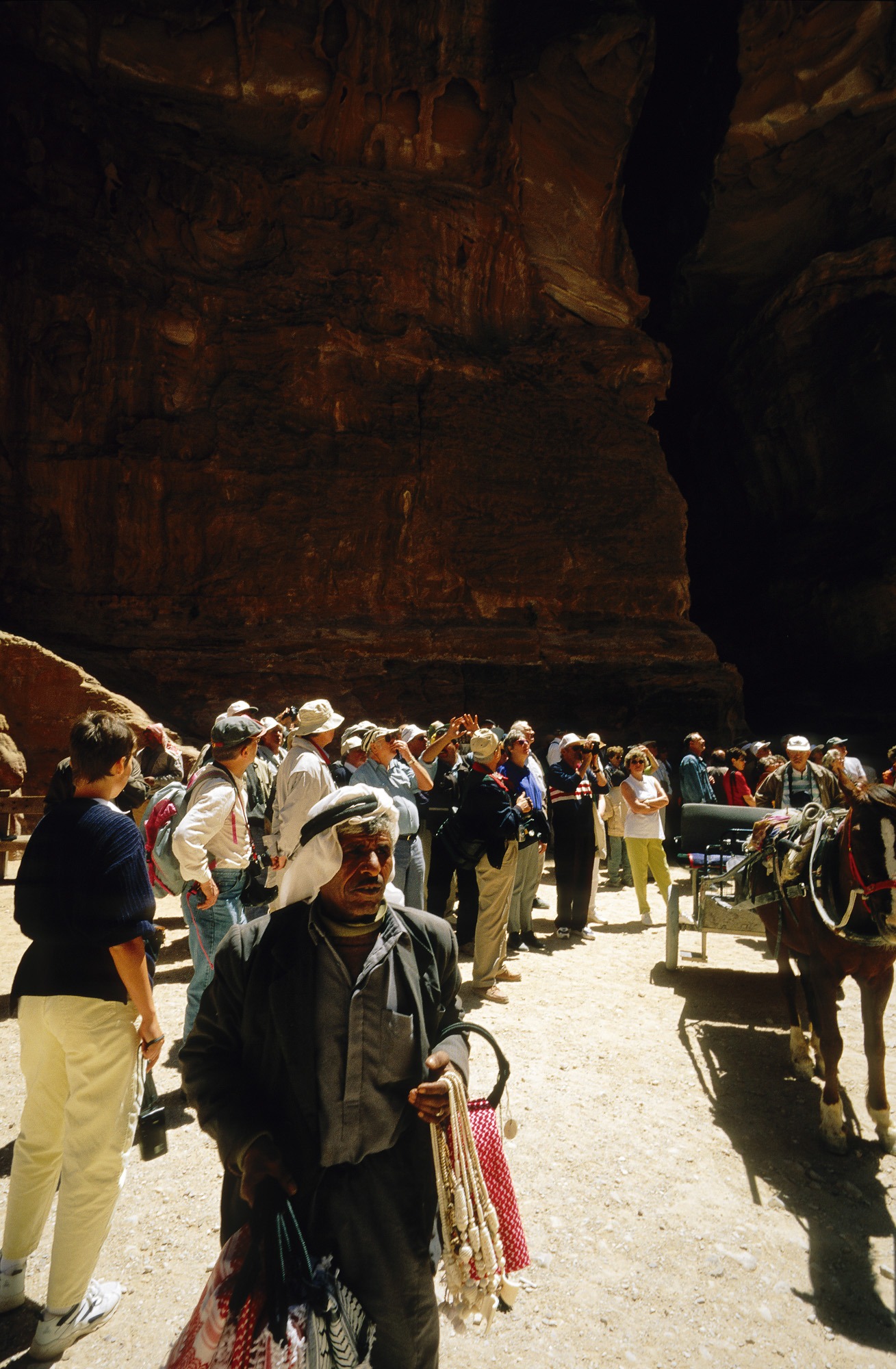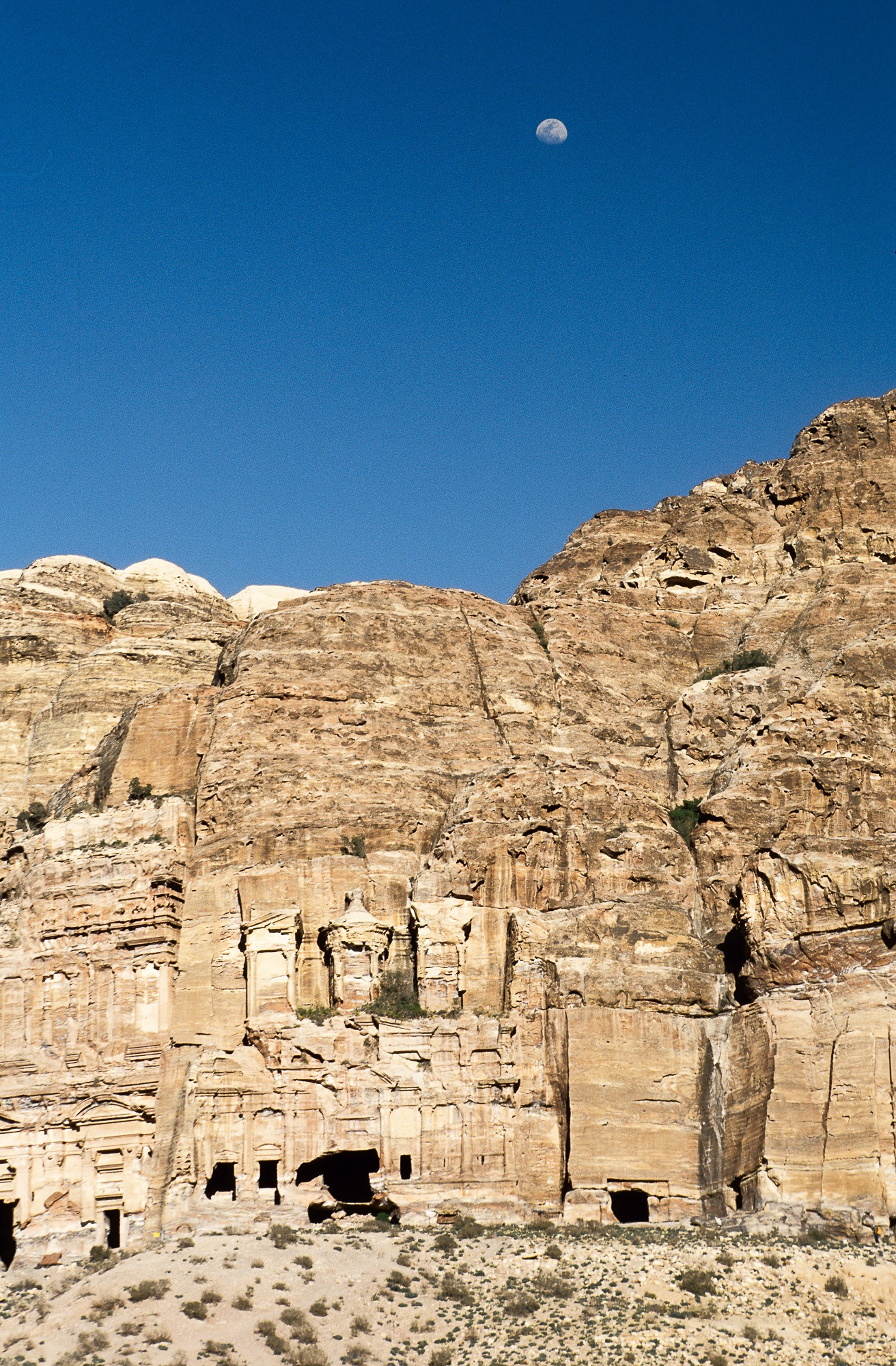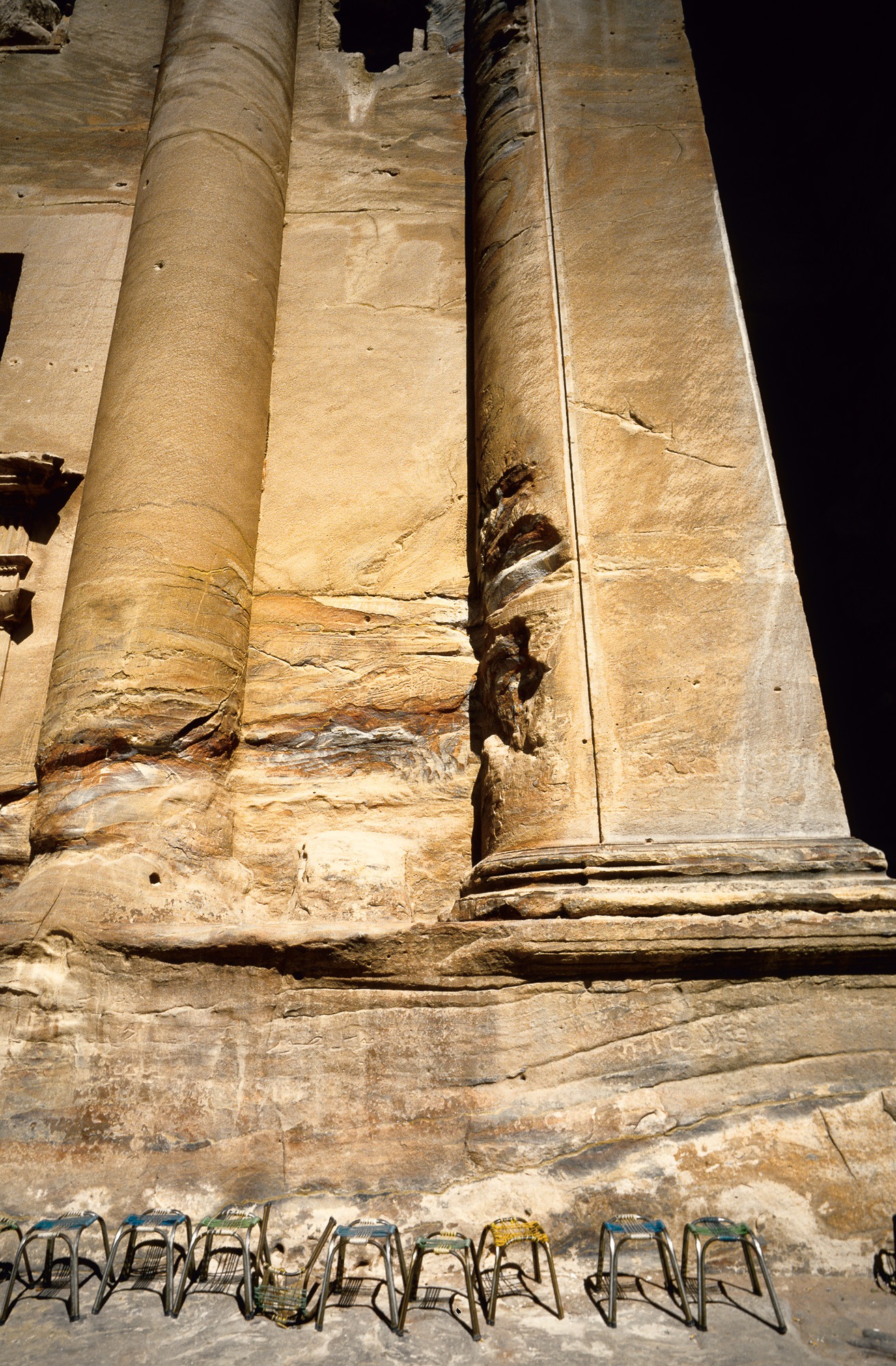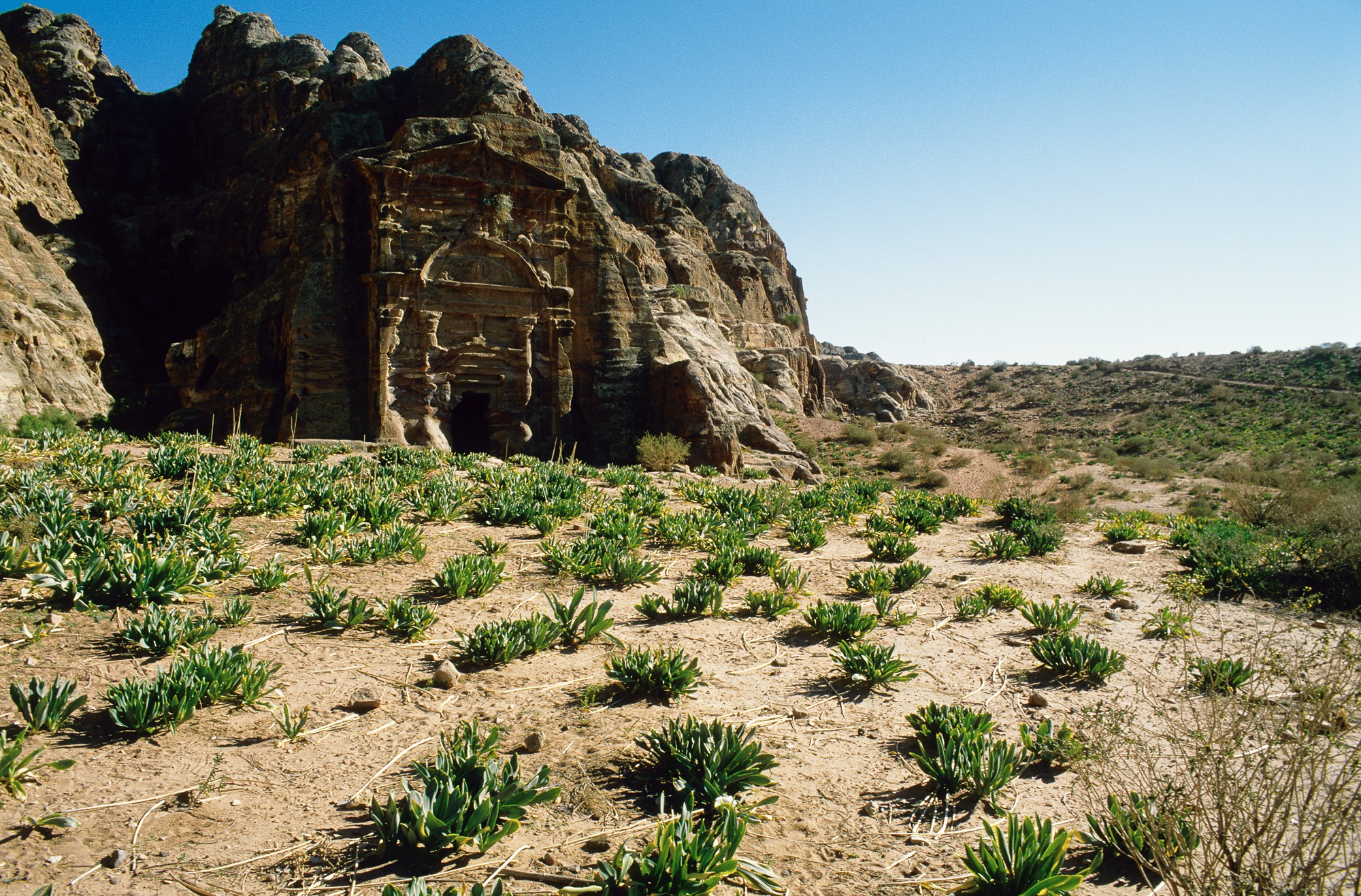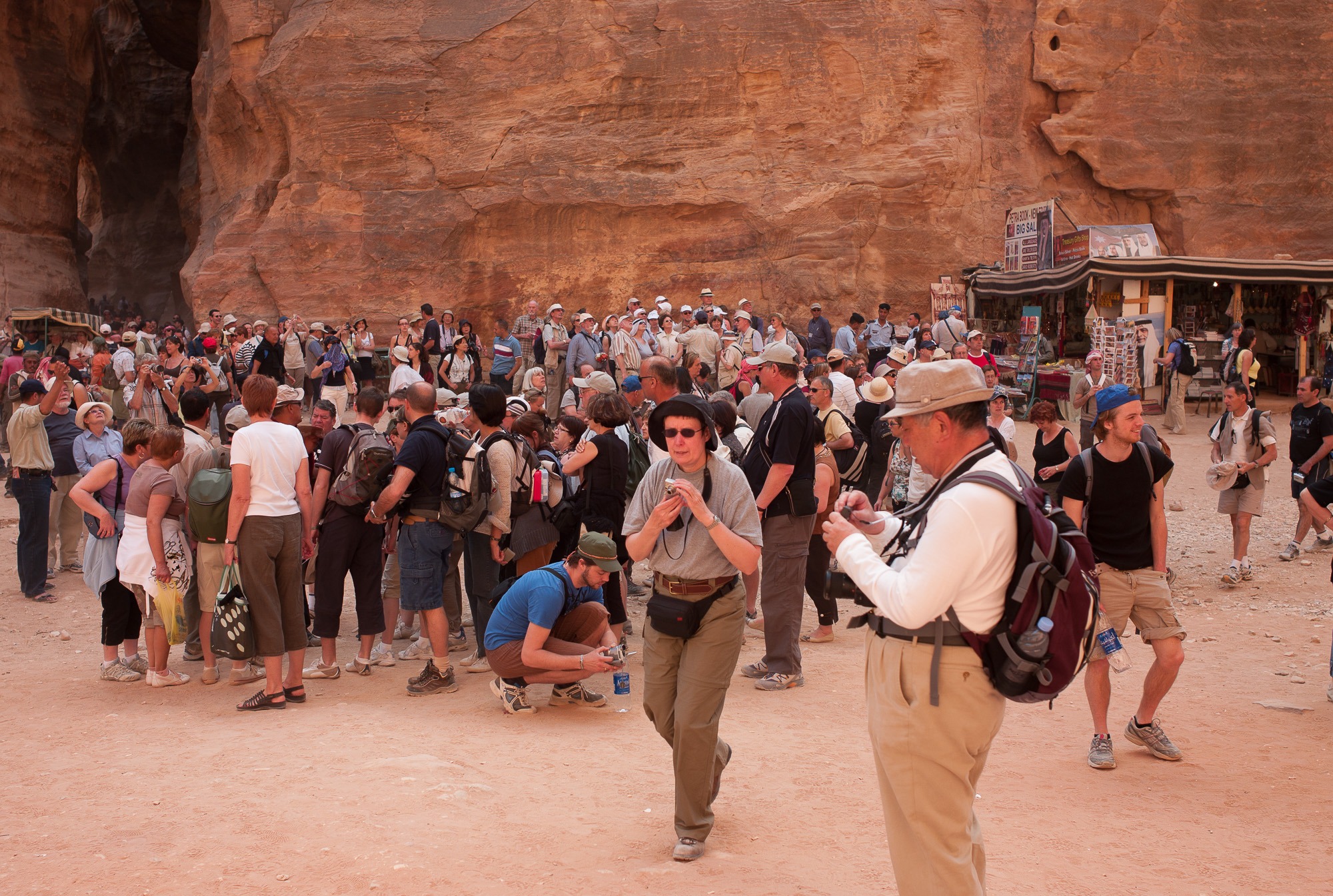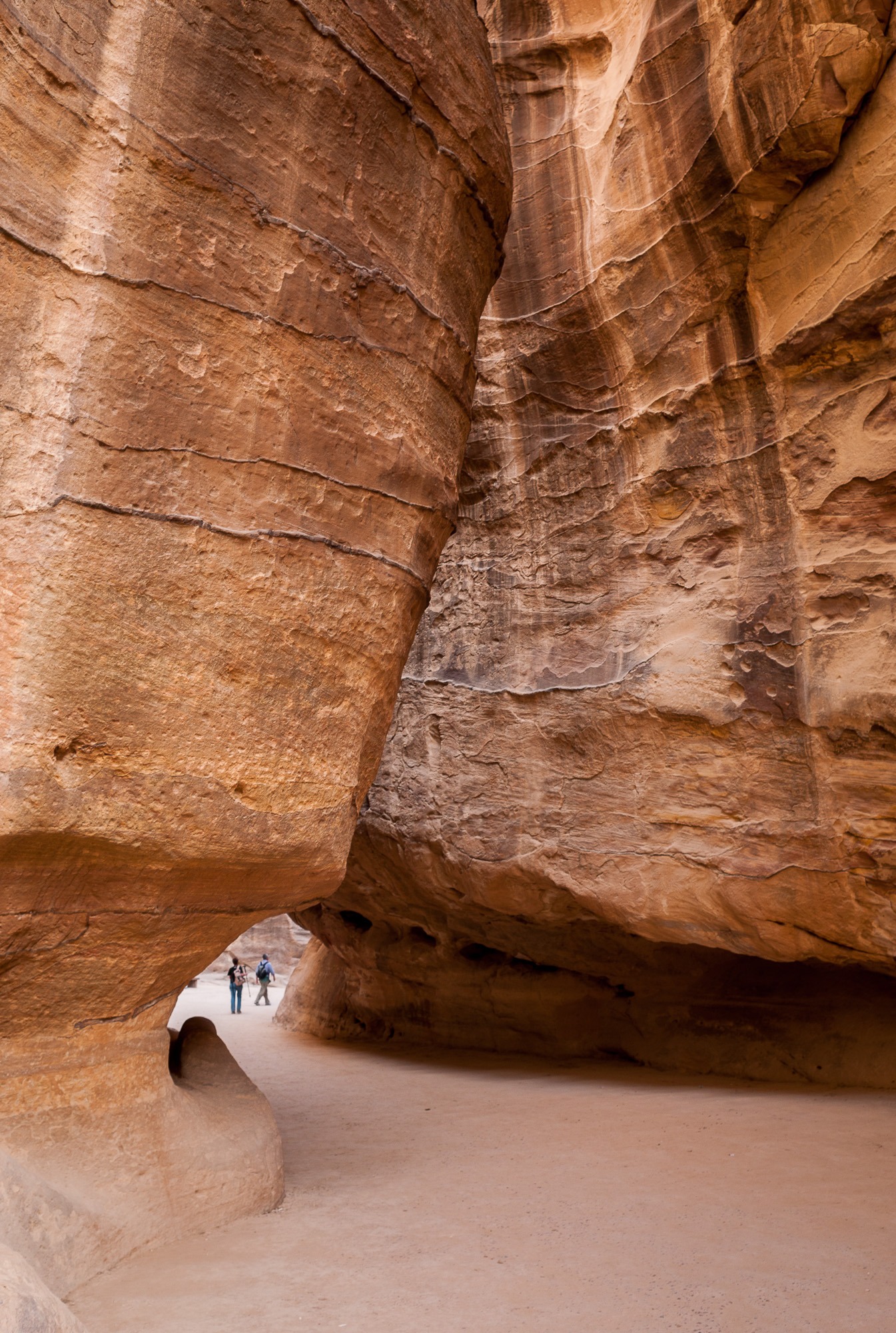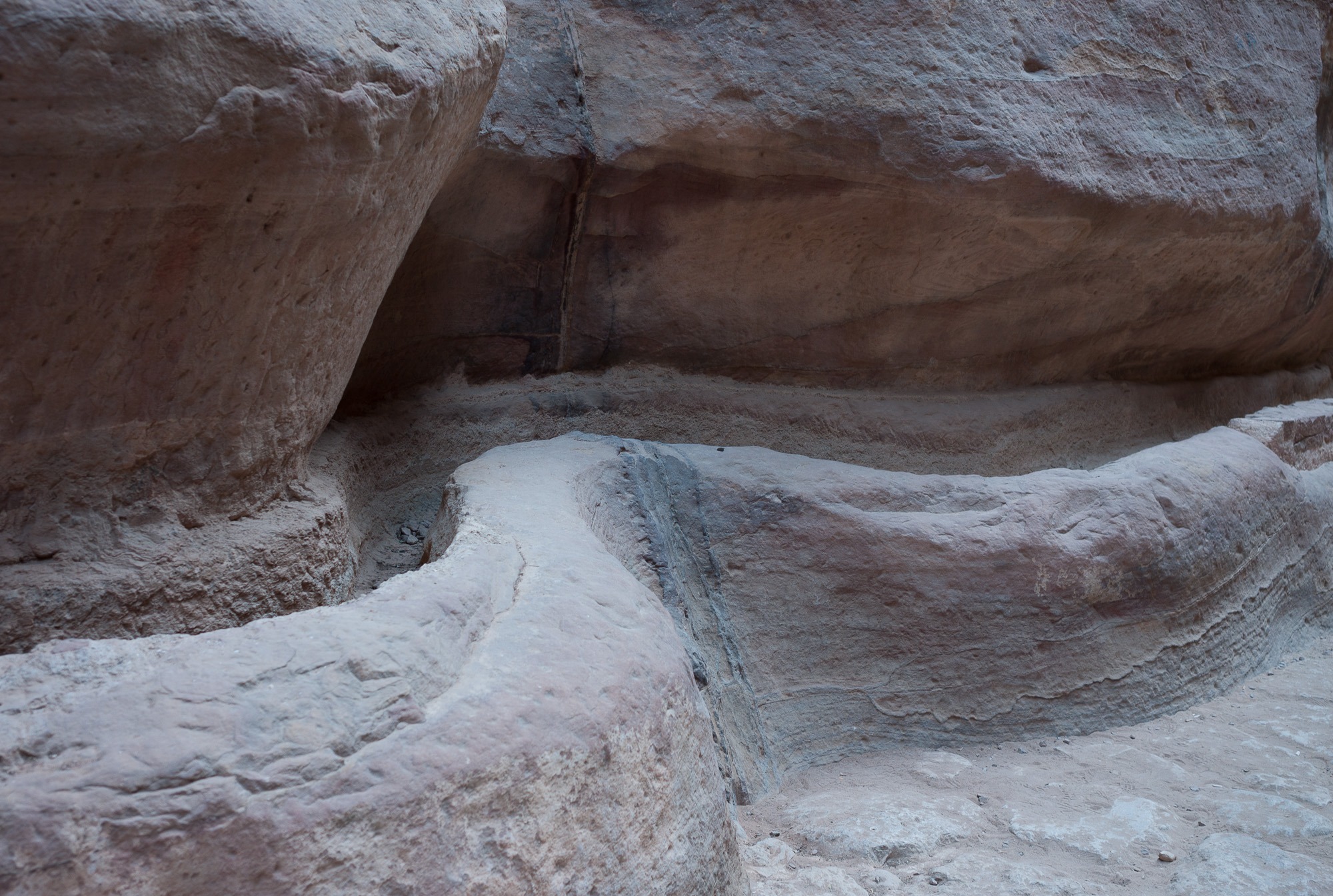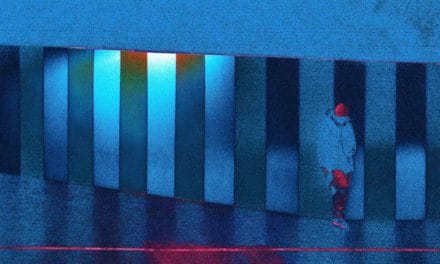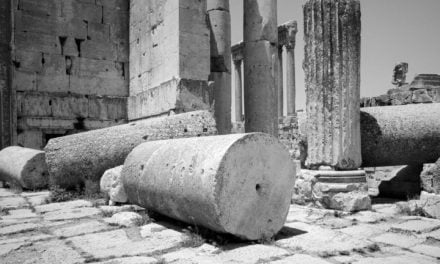Of all the world’s ancient cities, few are as astonishing and awe-inspiring as Petra.
Located between the Red Sea and the Dead Sea in Jordan, 200 km south of the capital Amman. Petra, the Nabataean, lies in a valley in the mountainous region of Edom. It is the region’s major tourist attraction.
The first traces of habitation date back eleven thousand years. But the real boom began when a tribe of Arab nomads, the Nabataeans, settled on the site around the 5th century AD. They prospered thanks to the caravan trade routes that passed through the area. Frankincense, myrrh, Chinese silk, spices, cotton, etc. enabled the Nabataeans to build a majestic city with grandiose architecture and lush gardens. It’s all the more grandiose when you realize that there are very few buildings in Petra. The monuments were “extracted” from the rock!
The town gradually “died out” as the trade routes changed. Abandoned after a devastating earthquake in 749, it was forgotten for centuries. It was Swiss explorer and adventurer Johann Ludwig Burckhardt who rediscovered Petra in 1812.
2022. La découverte du site reste un émerveillement. Après la traversée du Siq, une espèce de canyon d’une longueur de mille-cinq-cents mètres, le visiteur découvre le «Khazneh», le monument le plus célèbre de Petra. La découverte du site commence véritablement ici. Et c’est tellement immense que l’administration a prévu des passes de trois jours…
The images are divided into categories corresponding to the different visit locations. To find them, click here.
Literature about Petra is abundant. Wikipedia is a good starting point for research.
Tarek Charara
Text and images © Tarek Charara/Kaleidos images.
All rights reserved.
Les caravaniers (détail)
Sur la parois gauche (en allant vers le site) du Sîq se trouvent des sculptures rupestres, malheureusement très abimées par l’érosion du temps, qui remprésentent des caravaniers avec leurs dromadaires.
Al Khazneh à neuf heures du matin
Le matin à 9:00, lever de soleil sur le Khazneh (al Firaun). L’un des bâtiments les plus connus de Petra. Taillé dans le grès il fait 40m de haut et 28m de large, son architecture est d’influence hélénistique. Crée vers le 1er siècle avant JC, il est probable qu’il s’agit de la tombe du roi nabatéen Arétas IV. Le nom «Khazneh (al-Firaun)» signifie ‘Trésor (du pharaon) en arabe.
Al Khazneh
Al Khazneh (al Firaun). L’un des bâtiments les plus connus de Petra. Taillé dans le grès il fait 40m de haut et 28m de large, son architecture est d’influence hélénistique. Crée vers le 1er siècle avant JC, il est probable qu’il s’agit de la tombe du roi nabatéen Arétas IV. Le nom «Khazneh (al-Firaun)» signifie ‘Trésor (du pharaon) en arabe.
Touristes
Touristes devant un éventaire de flacons contenant des dessins fait avec du sable coloré trouvé sur place.
Canalisations d’eau dans le sîq
Tout au long du Sîq un chenal a été creusé du côté gauche (en allant vers le site) pour acheminer l’eau vers la cité de Petra. Ils étaient couverts à l’origine. Sur le côté droit, ce sont des tuyaux d’argile qui étaient utilisés pour acheminer l’eau.
Touristes
Touristes devant un éventaire de flacons contenant des dessins fait avec du sable coloré trouvé sur place.
Le tombeau à l’urne
Le tombeau à l’urne, ou tombeau dorique, est creusé dans la falaise du Djebel al-Khubtah. Il fait partie de l’ensemble des tombes royales au nord du théâtre romain et face au temple principal de Petra – Qasr al-Bint. Le tombeau à l’urne, probablement un tombeau princier, à une façade de style hélénistique et fut transformé en église en l’an 447 après JC. D’énormes voûtes sur deux niveaux soutiennent l’éscalier maçonné à l’époque byzantine. Ici, la place devant le tombeau avec ses colonnades de part et d’autre.
Le tombeau à l’urne
Le tombeau à l’urne, ou tombeau dorique, est creusé dans la falaise du Djebel al-Khubtah. Il fait partie de l’ensemble des tombes royales au nord du théâtre romain et face au temple principal de Petra – Qasr al-Bint. Le tombeau à l’urne, probablement un tombeau princier, à une façade de style hélénistique et fut transformé en église en l’an 447 après JC. D’énormes voûtes sur deux niveaux soutiennent l’éscalier maçonné à l’époque byzantine.
Le tombeau à l’urne
Le tombeau à l’urne, ou tombeau dorique, est creusé dans la falaise du Djebel al-Khubtah. Il fait partie de l’ensemble des tombes royales au nord du théâtre romain et face au temple principal de Petra – Qasr al-Bint. Le tombeau à l’urne, probablement un tombeau princier, à une façade de style hélénistique et fut transformé en église en l’an 447 après JC. D’énormes voûtes sur deux niveaux soutiennent l’éscalier maçonné à l’époque byzantine. Ici, la place devant le tombeau avec ses colonnades de part et d’autre.
Le sîq
Le sîq, entrée principale à la ville antique de Petra, est un défilé étroit (3m au point le plus étroit) et sinueux, long de 1500 mètres. Ses parois ont entre 90 et 200 mètres de hauteur.
Apparition du Khazneh
Après une marche d’une vingtaine de minutes à travers le Sîq, l’apparition du Khazneh.
Le tombeau à l’urne
Le tombeau à l’urne, ou tombeau dorique, est creusé dans la falaise du Djebel al-Khubtah. Il fait partie de l’ensemble des tombes royales au nord du théâtre romain et face au temple principal de Petra – Qasr al-Bint. Le tombeau à l’urne, probablement un tombeau princier, à une façade de style hélénistique et fut transformé en église en l’an 447 après JC. D’énormes voûtes sur deux niveaux soutiennent l’éscalier maçonné à l’époque byzantine. La petite place devant l’entrée de la tombe.
La tombe de Sextius Florentinus
La tombe de Sextius Florentinus est un peu en retrait des tombeaux Royaux. Sextius Florentinus fut gouverneur romain de l’arabie sous le règne de l’empereur Hadrien, entre 126 et 130. Il mourut à Petra avant sa désignation comme consul.
Le sîq
Le sîq, entrée principale à la ville antique de Petra, est un défilé étroit (trois mètres au point le plus étroit) et sinueux, long de 1500 mètres. Ses parois ont entre 90 et 200 mètres de hauteur. Les personnages dans la photo donnent l’échelle.
Canalisation d’eau dans le Sîq
Tout au long du Sîq un chenal a été creusé du côté gauche (en allant vers le site) pour acheminer l’eau vers la cité de Petra. Ils étaient couverts à l’origine. Sur le côté droit, c’est des tuyaux d’argile qui étaient utilisés pour acheminer l’eau.
Les caravaniers
Sur la parois gauche (en allant vers le site) du Sîq se trouvent des sculptures rupestres, malheureusement très abimées par l’érosion du temps, qui remprésentent des caravaniers avec leurs dromadaires.



